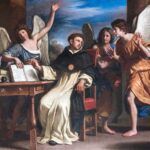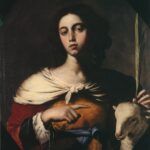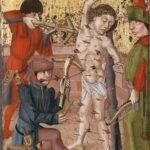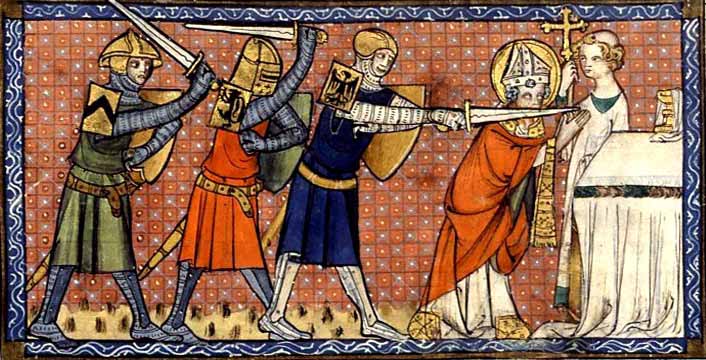
The twilight of December 29th bathes Canterbury in a golden sheen, as the city silently prepares to commemorate the tragic fate of Saint Thomas Becket. Archbishop and martyr, his life weaves through the threads of unconditional faith and unparalleled courage. The sword that marked his end is not merely a tool of death, but a symbol shining through the centuries, narrating a soul that, in its supreme moment of sacrifice, rose above its humanity.
The drama that unfolded at the altar of Canterbury Cathedral was not a mere act of violence, but an event that indelibly marked the spiritual history of humanity. Saint Thomas, with the episcopal robe wrapping him like a cloak of dignity, the mitre testifying to his spiritual elevation, and the pastoral staff, emblem of his duty to guide souls, transcends worldly violence. The sword, a symbol of temporal power, sometimes depicted piercing his head, becomes in art and collective memory a banner of martyrdom.
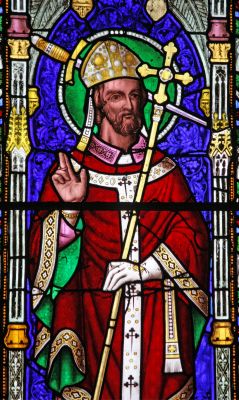
Saint Peter Martyr too, in the shadow of his own passion, shares the symbol of martyrdom. The knife or cleaver embedded in his skull represents another page written with the ink of sacrifice. Although the instruments of their passing differ, both saints rest in common memory, united by the red thread of their eternal sacrifice.
Distinguishing between these two sacred figures requires no expert guide; the iconography is clear, eloquent. If a saint is dressed in the sacred episcopal robe, adorned with a mitre, and holding a pastoral staff, it is Saint Thomas who speaks to the heart of the faithful. But if one’s gaze meets a martyr without episcopal insignia, his skull pierced by a more rudimentary weapon, the story of Saint Peter unfolds before the eyes.
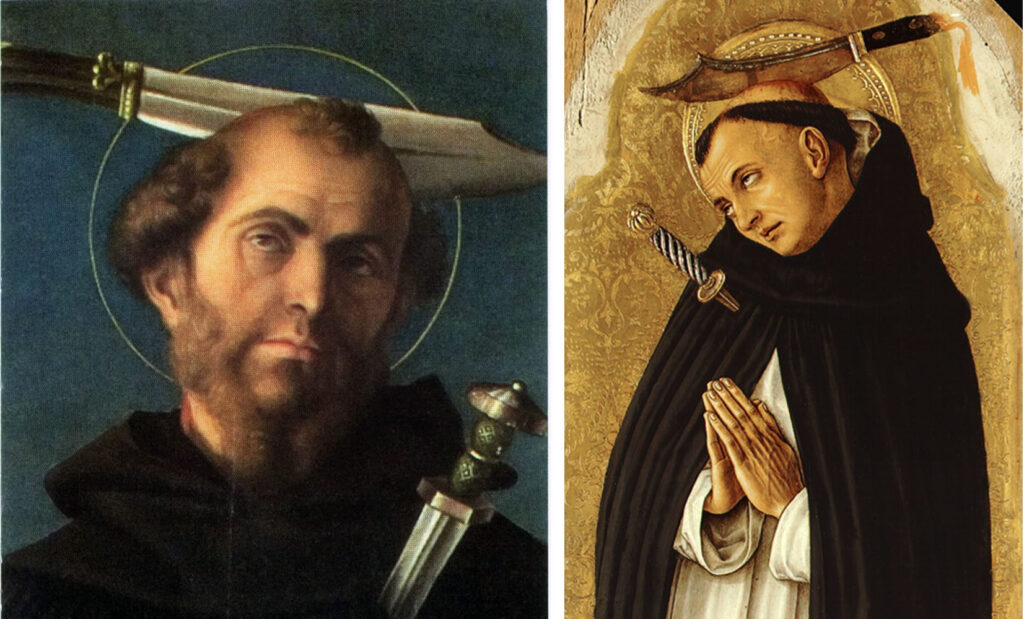
As the bells of Canterbury toll their ancient melody, their sound seems to traverse not just the cobblestone streets of the city, but also the continuum of time, intertwining with the voice of the past. There’s a pulse emanating from the metallic echo, a rhythm beating in unison with the heart of the listener, evoking the solemnity of an event that transcends the ordinary flow of hours.
In the bell’s toll, there’s an echo that carries with it the legacy of Saint Thomas Becket, that cry of faith that shattered the silence of a cold winter evening. It’s not just the sound that’s imbued with history, but also the very air, which seems to vibrate with an invisible but perceptible solemnity. It’s as if every ringing bell invites one to pause for a moment, to let the mundane give way to the eternal, to those higher thoughts that normally remain dormant behind the facades of existence.

Meditating on martyrdom and faith is not an exercise in nostalgia, but one of introspection and understanding. The stories of these martyred saints do not merely narrate lives cut short; they are the purest expression of absolute dedication, of a love that transcends the self to embrace a greater reality. The palm leaf, depicted in sacred representations, is not just a painterly ornament but the symbol of a triumph that doesn’t belong to earthly victories.
The palm, with its fronds reaching upwards, seems to indicate a path, a direction that guides the gaze and spirit upward, towards the heavens sought by Saint Thomas and Saint Peter Martyr in their earthly lives. In their stories, and those of all martyrs, is reflected the human quest for a meaning that goes beyond earthly life, a search that every human being, regardless of faith, undertakes in their innermost being.
These saints, therefore, do not reside only in the canvases or statues that portray them. They live in the intrinsic human need to seek light amidst darkness, to find hope even in the darkest night. Their lives are lit lamps in history, bright spots that continue to guide future generations towards a deeper understanding of existence, towards that dimension of transcendence that has always fascinated and challenged humanity in its ceaseless and marvelous search.


